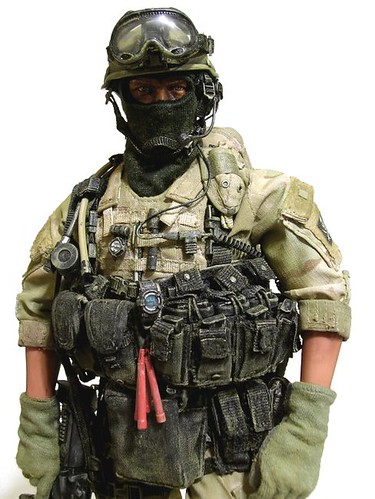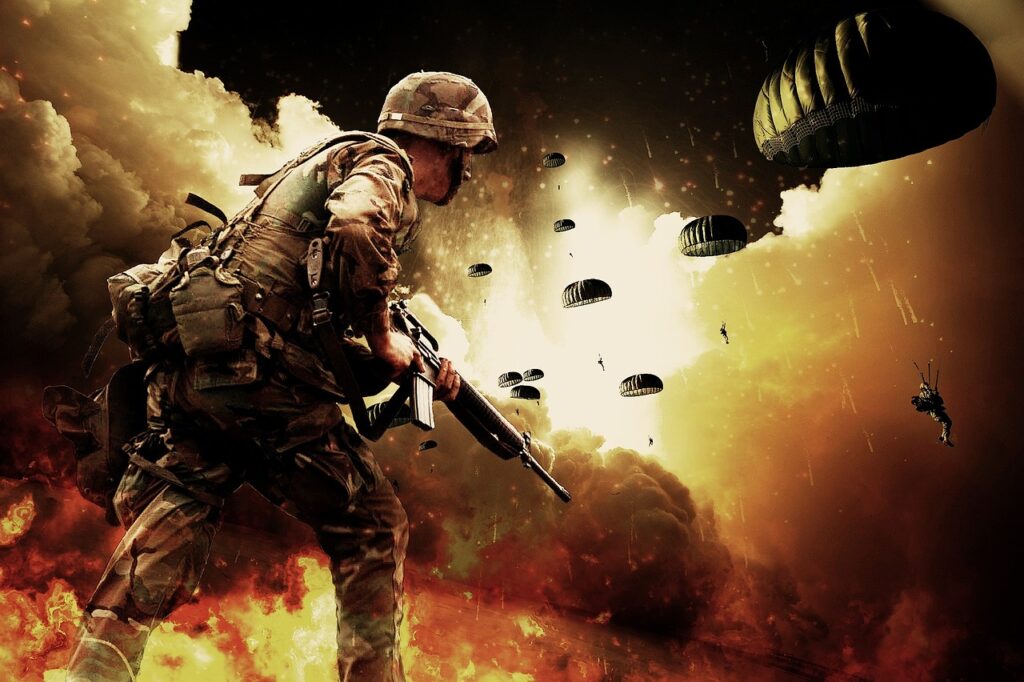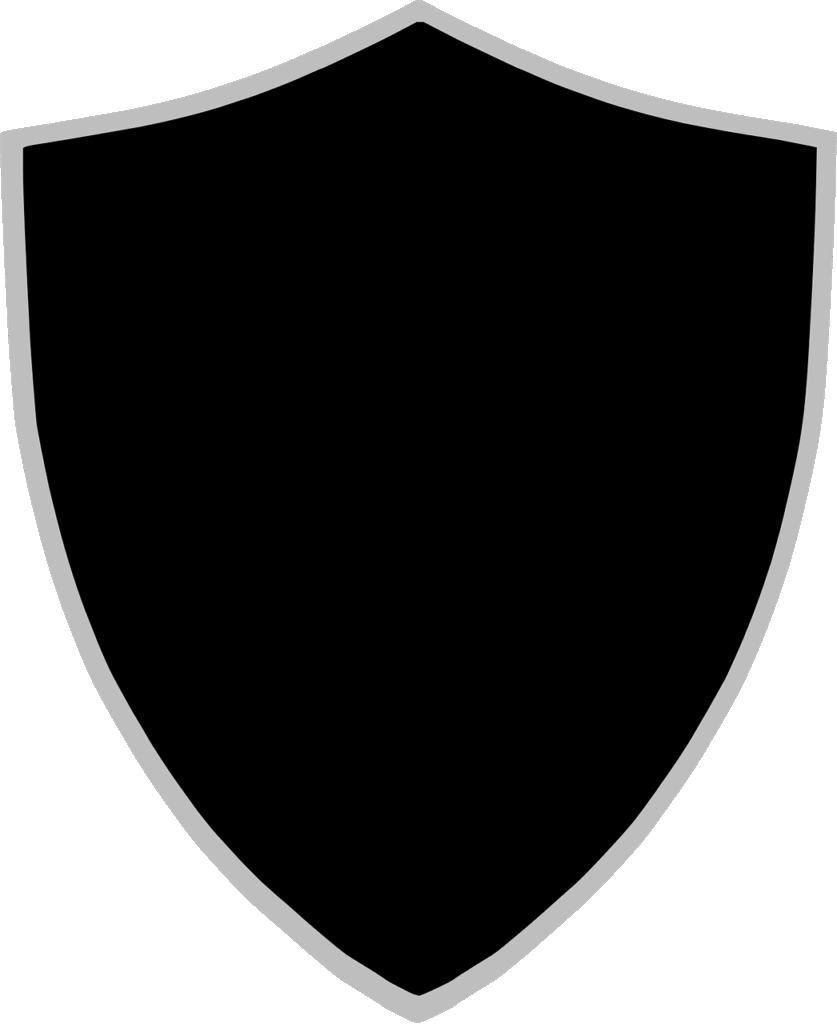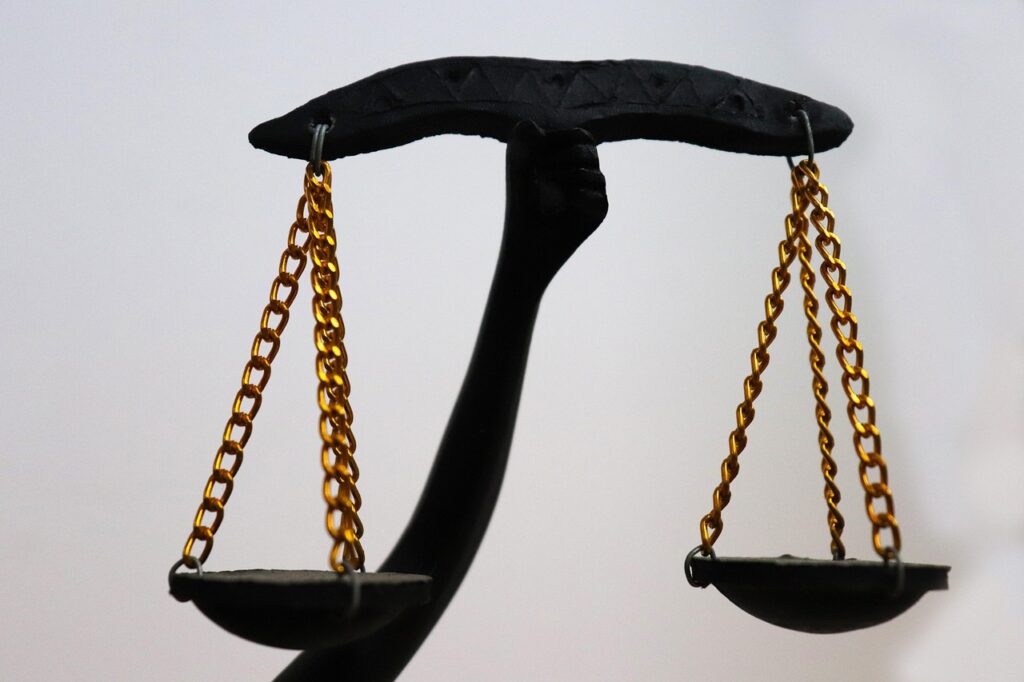
Deep within the annals of military lore, shrouded in a veil of secrecy and defined by an unwavering resolve, lie the United States Navy SEALs. These are the elite special operations forces of the U.S. Navy, celebrated for their extraordinary capabilities across sea, air, and land. Their very name evokes images of daring raids, precise strikes, and missions undertaken at the farthest reaches of human endurance, often behind enemy lines and under the most challenging conditions imaginable.
For decades, the mystique surrounding the SEALs has captivated the public imagination, hinting at a world of rigorous training, unparalleled bravery, and classified operations. While the names of the specific individuals involved in their most sensitive missions often remain undisclosed, the sheer impact of their actions—from taking down high-level targets to gathering critical intelligence—speaks volumes about their formidable prowess. It is a world where grit, secrecy, and a tradition of relentless commitment define every single operator.
This journey into the secret world of the Navy SEALs will peel back the layers of myth and reveal the compelling history and evolution of this iconic force. We will explore their origins, trace their development through pivotal global conflicts, and uncover the relentless dedication that transforms ordinary individuals into extraordinary warriors. Prepare to embark on an in-depth exploration of the men who embody the motto, “The Only Easy Day Was Yesterday.”

1. **The Genesis of Naval Special Warfare: Scouts and Raiders of WWII**
The roots of modern Naval Special Warfare stretch back to the tumultuous days of World War II, a conflict that rapidly accelerated the need for specialized amphibious reconnaissance. As the United States military prepared for massive seaborne invasions across hostile shores, a critical challenge emerged: how to effectively scout landing beaches and identify enemy coastal defenses under the cloak of secrecy.
To address this urgent requirement, a groundbreaking initiative was launched. In 1942, the joint Army, Marine Corps, and Navy Amphibious Scout and Raider School was established at Fort Pierce, Florida. This innovative program brought together personnel from different branches, united by the common goal of mastering the art of covert beach reconnaissance. It was a pioneering effort that laid the essential groundwork for future special operations.
Formed in September 1942, just nine months after the attack on Pearl Harbor, the Scouts and Raiders were charged with a precise and perilous mission. Their primary role was to identify and reconnoiter objective beaches, maintain a concealed position on the designated landing area prior to an assault, and then guide the inbound waves of attack craft to their targets. This required an intricate blend of navigation, observation, and stealth.
Under the leadership of figures like U.S. Army 1st Lieutenant Lloyd Peddicord and Navy Ensign John Bell, the first group of Scouts and Raiders swiftly moved from training to combat. They saw their initial action in November 1942 during Operation Torch on the North African Coast. Subsequent critical operations included supporting landings in Sicily, Salerno, Anzio, Normandy, and southern France, proving the invaluable utility of their specialized skills in the European Theater.
A second group, code-named Special Service Unit No. 1, was established in July 1943, embarking on operations in the Pacific Theater. Their missions included crucial intelligence gathering at Finschhafen in Papua New Guinea, and later at Gasmata, Arawe, Cape Gloucester, and the east and south coasts of New Britain. This unit, eventually renamed the 7th Amphibious Scouts after non-Navy personnel were reassigned, distinguished itself by participating in more than 40 landings across the Pacific, often without a single loss of personnel.
The final Scouts and Raiders organization operated in China, deployed to fight alongside the Sino-American Cooperative Organization (SACO). These groups conducted detailed surveys, including one of the upper Yangtze River in the spring of 1945, and a three-month survey of the Chinese coast from Shanghai to Kitchioh Wan, near Hong Kong, often disguised as local coolies to blend seamlessly into their environment. These foundational units, spearheaded by pioneers like Phil H. Bucklew, affectionately known as the “Father of Naval Special Warfare,” established a legacy of covert excellence that would continue to shape naval special operations for decades to come.
Military equipment: United States Navy SEALs
UnitName: United States Navy SEALs
Caption: Special Warfare insignia
Dates: [object Object]
Country: Flagu
Branch: navy
Type: Special operations force
Role: Special operations,Direct action (military),Counter-terrorism,Special reconnaissance,Amphibious reconnaissance,unconventional warfare (United States),Hostage rescue,Foreign internal defense,Counter-proliferation,Counter-narcotics,Underwater demolition
CommandStructure: United States Naval Special Warfare Command,Joint Special Operations Command
Garrison: Naval Amphibious Base Coronado,Joint Expeditionary Base–Little Creek
Nickname: “Frogmen”, “The Teams”, “Team Guys”, “The Men with Green Faces”
Motto: “The Only Easy Day Was Yesterday” “It Pays To Be A Winner”. “Never Out Of The Fight”.
Battles: Battle of Mogadishu (1993)
Categories: All Wikipedia articles written in American English, All articles containing potentially dated statements, All articles with unsourced statements, All pages needing factual verification, Armed forces diving
Summary: The United States Navy Sea, Air, and Land (SEAL) Teams, commonly known as Navy SEALs, are the United States Navy’s primary special operations force and a component of the United States Naval Special Warfare Command. Among the SEALs’ main functions are conducting small-unit special operation missions in maritime, jungle, urban, arctic, mountainous, and desert environments. SEALs are typically ordered to capture or kill high-level targets, or to gather intelligence behind enemy lines.
SEAL team personnel are hand-selected, highly trained, and highly proficient in unconventional warfare (UW), direct action (DA), and special reconnaissance (SR), among other tasks like sabotage, demolition, intelligence gathering, and hydrographic reconnaissance, training, and advising friendly militaries or other forces. All active SEALs are members of the U.S. Navy.
Get more information about: United States Navy SEALs
2. **Forging the “Demolitioneers”: The Birth of Naval Combat Demolition Units and “Hell Week”**
While the Scouts and Raiders honed their reconnaissance skills, another critical need emerged during World War II: the ability to clear obstacles and barriers that threatened amphibious landings. This led to the formation of the Naval Combat Demolition Units, or NCDUs, a force dedicated to explosive ingenuity and daring underwater operations.
The genesis of the NCDUs can be traced to September 1942, when 17 Navy salvage personnel arrived at ATB Little Creek, Virginia. Here, they underwent an intensive, week-long course that encompassed demolitions, explosive cable cutting, and commando raiding techniques. This initial training laid the groundwork for their eventual deployment into hostile waters.
The effectiveness of these early demolition units was dramatically demonstrated on November 10, 1942. During Operation Torch in North Africa, the first combat demolition unit successfully cut cable and net barriers across the Wadi Sebou River. This precise action created a vital passage, enabling the USS Dallas (DD-199) to traverse the water and insert U.S. Rangers, who then captured the strategically important Port Lyautey airdrome. It was a testament to the decisive impact of their specialized skills.
Recognizing the growing demand for such expertise, Lieutenant Commander Draper L. Kauffman, now revered as “The Father of Naval Combat Demolition,” was tasked in May 1943 with establishing a formal school for Naval Demolitions. His vision led to the creation of a rigorous training regimen that would become legendary. Kauffman’s volunteers primarily came from the Navy’s Civil Engineer Corps (CEC) and enlisted Seabees, individuals already possessing a foundation in engineering and construction.
Kauffman’s training commenced with an incredibly grueling week designed to filter out any under-performing candidates. This intense period of physical and mental hardship, eventually dubbed “Hell Week” by NCDU recruits, would demand the utmost from each participant, pushing them to their absolute limits. This very crucible of training, conceived for the NCDUs, remains an integral and iconic component of modern-day Navy SEAL training, a rite of passage that defines entry into the elite ranks.
By April 1944, the NCDUs were at the forefront of the largest amphibious operation in history: Operation Overlord, the D-Day landings at Normandy. A total of 34 NCDUs were deployed to England, ready to face the heavily fortified German defenses. Their mission was to clear beach obstacles under intense enemy fire, a task that demanded immense courage and precision.
On June 6, 1944, under a hail of bullets and artillery, the NCDUs at Omaha Beach performed heroically, managing to blow eight complete gaps and two partial gaps in the German defenses. This came at a steep cost, however, as the NCDUs suffered a staggering 52% casualty rate, with 31 killed and 60 wounded. Simultaneously, the NCDUs at Utah Beach faced less intense enemy fire but cleared an impressive 700 yards of beach in two hours, followed by another 900 yards by the afternoon, with significantly lighter casualties: six killed and eleven wounded. Remarkably, throughout Operation Overlord, not a single demolitioneer was lost due to the improper handling of explosives, a testament to their meticulous training and discipline. These fearless “demolitioneers” continued their vital work in August 1944, participating in Operation Dragoon in southern France, the last amphibious operation in the European Theater, solidifying their legacy as indispensable pioneers of naval special operations.
Military equipment: United States Navy SEALs
UnitName: United States Navy SEALs
Caption: Special Warfare insignia
Dates: [object Object]
Country: Flagu
Branch: navy
Type: Special operations force
Role: Special operations,Direct action (military),Counter-terrorism,Special reconnaissance,Amphibious reconnaissance,unconventional warfare (United States),Hostage rescue,Foreign internal defense,Counter-proliferation,Counter-narcotics,Underwater demolition
CommandStructure: United States Naval Special Warfare Command,Joint Special Operations Command
Garrison: Naval Amphibious Base Coronado,Joint Expeditionary Base–Little Creek
Nickname: “Frogmen”, “The Teams”, “Team Guys”, “The Men with Green Faces”
Motto: “The Only Easy Day Was Yesterday” “It Pays To Be A Winner”. “Never Out Of The Fight”.
Battles: Battle of Mogadishu (1993)
Categories: All Wikipedia articles written in American English, All articles containing potentially dated statements, All articles with unsourced statements, All pages needing factual verification, Armed forces diving
Summary: The United States Navy Sea, Air, and Land (SEAL) Teams, commonly known as Navy SEALs, are the United States Navy’s primary special operations force and a component of the United States Naval Special Warfare Command. Among the SEALs’ main functions are conducting small-unit special operation missions in maritime, jungle, urban, arctic, mountainous, and desert environments. SEALs are typically ordered to capture or kill high-level targets, or to gather intelligence behind enemy lines.
SEAL team personnel are hand-selected, highly trained, and highly proficient in unconventional warfare (UW), direct action (DA), and special reconnaissance (SR), among other tasks like sabotage, demolition, intelligence gathering, and hydrographic reconnaissance, training, and advising friendly militaries or other forces. All active SEALs are members of the U.S. Navy.
Get more information about: United States Navy SEALs

3. **The “Naked Warriors”: Underwater Demolition Teams (UDTs) in the Pacific Theater**
As the war raged in the Pacific, the lessons learned from costly amphibious assaults, particularly the devastating failure at Tarawa, underscored a critical intelligence gap. Marines attempting to clear surrounding coral reefs with Landing Vehicle Tracked (LVTs) found themselves mired in impassable terrain, highlighting the desperate need for specialized reconnaissance of underwater obstacles before any main landing force could arrive. This dire situation led Rear Admiral Kelly Turner, the Navy’s top amphibious expert, to order the formation of the first units specifically designated as Underwater Demolition Teams, or UDTs.
The personnel for these nascent teams were largely drawn from local Seabees and individuals with prior experience in the Naval Combat Demolition Units. Their training ground was established at the Waipio Amphibious Operating Base, under the operational and administrative control of the V Amphibious Corps. The instructors and trainees alike were often graduates of the Fort Pierce NCDU or Scouts and Raiders schools, bringing with them a wealth of foundational knowledge in demolition and reconnaissance.
Initially, when Teams 1 and 2 were formed, they were considered “provisional” units, comprising a total of 180 men. Commanders such as CDR E.D. Brewster (UDT 1) and CDR John T. Koehler (UDT 2) led these pioneering groups. The early UDT members wore fatigues with life-vests and were not expected to leave their boats during reconnaissance, a protocol similar to their NCDU predecessors.
However, a pivotal moment occurred at Kwajalein that dramatically altered UDT methodology. Admiral Turner, frustrated by insufficient intelligence on coral and underwater obstacles, ordered a daylight reconnaissance. Ensign Lewis F. Luehrs and Seabee Chief William Acheson, anticipating the limitations of staying in their boat, made a bold decision. They stripped down to their swim trunks under their fatigues, and, once on site, spent 45 minutes in the water in broad daylight. Upon their return, still in their trunks, they were taken directly to Admiral Turner’s flagship to deliver their detailed report. This act of courage and initiative proved to Admiral Turner that daylight reconnaissance by individual swimmers was the most accurate way to gather vital information, a conclusion he reported directly to Admiral Nimitz.
The success of these UDT 1 Seabees, in daring to depart from established protocol, fundamentally rewrote the UDT mission model and training regimen. This audacious display also forged the enduring image of UDTs as the “naked warriors”—men stripped of heavy gear, relying solely on their wits, bodies, and basic equipment to conquer the ocean’s hidden dangers. Following operations in the Marshall Islands, Admiral Turner restructured the two provisional UDT units, creating seven permanent units, each with an allotted size of 96 men. To enhance operational efficiency, UDTs became an all-Navy outfit, with Army and Marine Corps engineers returning to their respective units.
Moving forward, the UDTs embraced the reconnaissance method proven successful in Kwajalein: daylight operations utilizing swimsuits and goggles, a significant departure from the Scouts and Raiders’ nighttime rubber boat approach. To implement these changes and expand the UDTs, Koehler was appointed commanding officer of the Naval Combat Demolition Training and Experimental Base on Maui, with LCDR Draper Kauffman joining as a combat officer. The Seabees, particularly in teams 1–9, 13, and 15, formed the vast majority of the UDTs’ enlisted men, with officers predominantly from the CEC. By the war’s end, 34 teams had been formed, with 21 of them deployed in active service. The UDT uniform itself evolved from combat fatigues to simple trunks, swimfins, diving masks, and Ka-bars, with swimfins becoming standard issue after being introduced by OSS-trained men joining the UDTs. These “Naked Warriors” saw action in every major Pacific amphibious landing, including Eniwetok, Saipan, Kwajalein, Tinian, Guam, Iwo Jima, and Okinawa.
By the fall of 1944, UDTs were considered an indispensable U. S. military special operations unit, with Navy planners in the Central Pacific heavily relying on their reconnaissance reports and demolition activities to clear the way for landings. Their last operation of the war was on July 4, 1945, at Balikpapan, Borneo.
Notably, the UDTs were the only special troops to avoid complete disbandment after the war, unlike other specialized units, demonstrating their proven value. During WWII, their existence was kept largely secret, and they were officially recognized only post-war. They lacked a specific Navy rating or insignia, with many men wearing the CB (Seabee) rating, considering themselves Seabees engaged in underwater demolition, and referring to themselves as “Demolitioneers. ” The bravery and effectiveness of the UDTs earned them unprecedented recognition, with Admiral Turner recommending sixty Silver Stars and over three hundred Bronze Stars with Vs for the Seabees and other service members of UDTs 1–7.
For Operation Forager, every officer in UDTs 5, 7, 3, and 4 received a Silver Star, and all enlisted men received Bronze Stars with Vs, an extraordinary commendation. The friendly rivalry with Marines was a cherished tradition, with UDTs often creating signs to greet the landing forces, proudly proclaiming that the “Seabees had been there first,” a practice that continued into later conflicts like Vietnam. In 1946, UDT 3 participated in Operation Crossroads, designated as TU 1. 1. 3, embarking for Bikini to retrieve water samples from ground zero of the Baker blast, showcasing their continued role in hazardous, specialized operations.
Military equipment: Underwater Demolition Team
UnitName: Underwater Demolition Teams
Caption: Patch of the Underwater Demolition Teams.
Country: United States
Type: Amphibious warfare
Branch: United States Navy
Dates: United States Navy SEALs
Role: Direct action (military),Underwater demolition,Special reconnaissance,Infiltration tactics
Garrison: Fort Pierce, Florida,Florida
Nickname: UDT, Frogmen
Battles: Operation Overlord,Operation Torch,Battle of Kwajalein
Categories: All articles with dead external links, All articles with unsourced statements, Armed forces diving, Articles with dead external links from February 2025, Articles with permanently dead external links
Summary: The Underwater Demolition Team (UDT), or frogmen, were amphibious units created by the United States Navy during World War II with specialized missions. They were predecessors of the Navy’s current SEAL teams.
Their primary WWII function began with reconnaissance and underwater demolition of natural or man-made obstacles obstructing amphibious landings. Postwar they transitioned to scuba gear changing their capabilities. With that they came to be considered more elite and tactical during the Korean and Vietnam Wars. UDTs were pioneers in underwater demolition, closed-circuit diving, combat swimming, riverine warfare and midget submarine (dry and wet submersible) operations. They later were tasked with ensuring recovery of space capsules and astronauts after splash down in the Mercury, Gemini and Apollo space flight programs. Commando training was added making them the forerunner to the United States Navy SEAL program that exists today.
By 1983, the UDTs were re-designated as SEAL Teams or Swimmer Delivery Vehicle Teams (SDVTs); however, some UDTs, had already been re-designated into UCTs and special boat units prior. SDVTs have since been re-designated SEAL Delivery Vehicle Teams.
Get more information about: Underwater Demolition Team

4. **From Demolition to Commando Tactics: UDTs’ Evolving Role in the Korean War**
The onset of the Korean War on June 25, 1950, presented a new arena for the Underwater Demolition Teams, transforming their wartime experience into an offensive spearhead. What began with a small detachment of 11 personnel from UDT 3 quickly expanded, with UDT participation growing to three teams comprising a combined strength of 300 men, highlighting the immediate recognition of their specialized capabilities.
During this “Forgotten War,” the UDTs fought with intense dedication, adapting their demolition expertise gained from World War II to serve a more offensive role. They continued to leverage water as both cover and concealment, using it as their primary method of insertion for daring missions. Their targets now included critical enemy infrastructure such as bridges, tunnels, and even fishing nets that supplied the North Korean Army, demonstrating a versatile application of their skills.
Beyond their operational objectives, the UDTs forged a close and enduring working relationship with the Republic of Korea Underwater Demolitions Unit, a bond that persists to this day, reflecting a legacy of international cooperation and shared tactical development. Through their focused efforts on demolitions and mine disposal, the UDTs continued to refine and develop their commando tactics, broadening their operational scope beyond pure reconnaissance.
Given the fluid and often clandestine nature of the Korean War, the UDTs maintained a remarkably low operational profile. Their missions extended to transporting spies deep into North Korea and, controversially, destroying North Korean fishing nets, a strategic disruption of enemy supply lines that was initially frowned upon by higher-ranking officials who deemed it a non-traditional use of Naval forces. Nonetheless, the UDTs pressed on, proving their adaptability.
Operating as part of the Special Operations Group (SOG), UDTs successfully conducted daring demolition raids on railroad tunnels and bridges along the rugged Korean coast. These specialized night coastal demolition raids became a hallmark of their efforts, undertaking tasks that, in the words of UDT Lieutenant Ted Fielding, “nobody else could do, and what nobody else wanted to do.” Fielding himself was awarded the Silver Star during the Korean War and later achieved the rank of Captain, a testament to the valor displayed in these missions.
On September 15, 1950, UDTs played a crucial role in supporting Operation Chromite, the pivotal amphibious landing at Incheon. Personnel from UDT 1 and 3 led the way, advancing ahead of the landing craft to scout treacherous mud flats, mark low points in the channel, clear fouled propellers, and search for mines, effectively clearing the path for the Marine landing. Four UDT personnel even acted as wave-guides, directing the assault craft through the challenging amphibious environment.
In October 1950, UDTs supported critical mine-clearing operations in Wonsan Harbor, where frogmen would locate and mark mines for minesweepers. The extreme danger of this task was tragically underscored on October 12, when two U.S. minesweepers struck mines and sank, prompting UDTs to heroically rescue 25 sailors. The very next day, William Giannotti made history by conducting the first U.S. combat operation using an “aqualung” when he dived on USS Pledge, showcasing an early adoption of advanced underwater breathing apparatus. For the remainder of the war, UDTs continued their vital work, conducting beach and river reconnaissance, infiltrating guerrillas behind enemy lines from the sea, maintaining mine-sweeping operations, and participating in Operation Fishnet, a targeted campaign that severely devastated the North Koreans’ fishing capability.
Military equipment: Underwater Demolition Team
UnitName: Underwater Demolition Teams
Caption: Patch of the Underwater Demolition Teams.
Country: United States
Type: Amphibious warfare
Branch: United States Navy
Dates: United States Navy SEALs
Role: Direct action (military),Underwater demolition,Special reconnaissance,Infiltration tactics
Garrison: Fort Pierce, Florida,Florida
Nickname: UDT, Frogmen
Battles: Operation Overlord,Operation Torch,Battle of Kwajalein
Categories: All articles with dead external links, All articles with unsourced statements, Armed forces diving, Articles with dead external links from February 2025, Articles with permanently dead external links
Summary: The Underwater Demolition Team (UDT), or frogmen, were amphibious units created by the United States Navy during World War II with specialized missions. They were predecessors of the Navy’s current SEAL teams.
Their primary WWII function began with reconnaissance and underwater demolition of natural or man-made obstacles obstructing amphibious landings. Postwar they transitioned to scuba gear changing their capabilities. With that they came to be considered more elite and tactical during the Korean and Vietnam Wars. UDTs were pioneers in underwater demolition, closed-circuit diving, combat swimming, riverine warfare and midget submarine (dry and wet submersible) operations. They later were tasked with ensuring recovery of space capsules and astronauts after splash down in the Mercury, Gemini and Apollo space flight programs. Commando training was added making them the forerunner to the United States Navy SEAL program that exists today.
By 1983, the UDTs were re-designated as SEAL Teams or Swimmer Delivery Vehicle Teams (SDVTs); however, some UDTs, had already been re-designated into UCTs and special boat units prior. SDVTs have since been re-designated SEAL Delivery Vehicle Teams.
Get more information about: Underwater Demolition Team
5. **President Kennedy’s Vision: The Formal Establishment of the Navy SEALs**
The landscape of global conflict began to shift in the early 1960s, with a growing recognition of the unique challenges posed by guerrilla warfare, particularly in regions like Southeast Asia. President John F. Kennedy, keenly aware of this evolving threat, championed the need for a strengthened American capability in unconventional warfare and special operations. His foresight would become a catalyst for the formal establishment of the Navy SEALs.
In a landmark speech to Congress on May 25, 1961, Kennedy articulated his profound respect for the United States Army Special Forces, signaling a broader commitment to these specialized units. While his ambitious announcement of the government’s plan to land a man on the moon captured widespread attention, in the very same address, he unveiled his intention to allocate over $100 million to significantly bolster U.S. special operations forces and expand America’s unconventional warfare capabilities. It is a common misconception that President Kennedy single-handedly created the Navy SEALs; in reality, his announcement served as a formal acknowledgment of a strategic process that had been underway since the Korean War, recognizing the existing, yet fragmented, potential within the Navy’s specialized units.
Responding to this imperative, the Navy needed to clearly define its role within the burgeoning special operations arena. In March 1961, Admiral Arleigh Burke, then Chief of Naval Operations, put forth a crucial recommendation: the establishment of dedicated guerrilla and counter-guerrilla units. These units, he envisioned, would possess the unique capability to operate seamlessly from sea, air, or land, providing an agile and versatile response to emerging threats. This recommendation marked the definitive beginning of the Navy SEALs.
Crucially, all personnel selected for the newly formed SEALs were drawn from the Navy’s existing Underwater Demolition Teams. These UDTs had already accumulated extensive and invaluable experience in commando warfare during the Korean War, providing a seasoned and highly capable foundation. However, the Underwater Demolition Teams themselves remained vital to the Navy’s amphibious force, necessitating a careful distinction between their traditional roles and the new, expanded mission set of the SEALs.
The first two SEAL teams were formally constituted in January 1962, strategically positioned on both U.S. coasts. Team One was established at Naval Amphibious Base Coronado, in San Diego, California, to cover the Pacific theater, while Team Two was stationed at Naval Amphibious Base Little Creek, in Virginia Beach, Virginia, overseeing operations in the Atlantic. The core mission of these newly formed SEALs was to conduct counter-guerrilla warfare and execute clandestine operations within maritime and riverine environments, tasks that demanded a blend of stealth, precision, and aggressive combat skills.
Beyond their UDT lineage, the men of the newly formed SEAL Teams underwent highly specialized and unconventional training. This included intensive instruction in hand-to-hand combat, high-altitude parachuting, advanced demolitions, and even foreign languages, equipping them for a wide array of global contingencies. While they continued to attend Underwater Demolition Team replacement training, their path diverged into a distinct SEAL Basic Indoctrination (SBI) training class at Camp Kerry in the Cuyamaca Mountains. Upon successful completion of SBI, they would then integrate into a platoon, commencing specific platoon training tailored to their elite designation.
According to Roy Boehm, one of the founding members of the SEAL team, their earliest missions were covertly directed against communist Cuba. These operations involved deploying from submarines and conducting clandestine beach reconnaissance, gathering vital intelligence in anticipation of a proposed U.S. amphibious invasion of the island. On at least one documented occasion, Boehm and another SEAL successfully smuggled a CIA agent ashore to photograph Soviet nuclear missiles being unloaded at the dockside, demonstrating the high-stakes, clandestine nature of their initial assignments and their immediate plunge into the shadowy world of Cold War special operations.
Military equipment: United States Navy SEALs
UnitName: United States Navy SEALs
Caption: Special Warfare insignia
Dates: [object Object]
Country: Flagu
Branch: navy
Type: Special operations force
Role: Special operations,Direct action (military),Counter-terrorism,Special reconnaissance,Amphibious reconnaissance,unconventional warfare (United States),Hostage rescue,Foreign internal defense,Counter-proliferation,Counter-narcotics,Underwater demolition
CommandStructure: United States Naval Special Warfare Command,Joint Special Operations Command
Garrison: Naval Amphibious Base Coronado,Joint Expeditionary Base–Little Creek
Nickname: “Frogmen”, “The Teams”, “Team Guys”, “The Men with Green Faces”
Motto: “The Only Easy Day Was Yesterday” “It Pays To Be A Winner”. “Never Out Of The Fight”.
Battles: Battle of Mogadishu (1993)
Categories: All Wikipedia articles written in American English, All articles containing potentially dated statements, All articles with unsourced statements, All pages needing factual verification, Armed forces diving
Summary: The United States Navy Sea, Air, and Land (SEAL) Teams, commonly known as Navy SEALs, are the United States Navy’s primary special operations force and a component of the United States Naval Special Warfare Command. Among the SEALs’ main functions are conducting small-unit special operation missions in maritime, jungle, urban, arctic, mountainous, and desert environments. SEALs are typically ordered to capture or kill high-level targets, or to gather intelligence behind enemy lines.
SEAL team personnel are hand-selected, highly trained, and highly proficient in unconventional warfare (UW), direct action (DA), and special reconnaissance (SR), among other tasks like sabotage, demolition, intelligence gathering, and hydrographic reconnaissance, training, and advising friendly militaries or other forces. All active SEALs are members of the U.S. Navy.
Get more information about: United States Navy SEALs

6. **”The Men with Green Faces”: Navy SEALs’ Baptism by Fire in the Vietnam War**
The burgeoning conflict in Vietnam quickly became the proving ground for the nascent Navy SEALs, transforming President Kennedy’s vision into a harsh combat reality. The Pacific Command recognized Vietnam as a potential “hot spot” where unconventional forces would be critically needed to counter the unique challenges of guerrilla warfare. As early as 1962, Underwater Demolition Teams began conducting vital hydrographic surveys, setting the stage for deeper U.S. military involvement.
In March 1962, just months after their formal establishment, SEALs were deployed to South Vietnam, not yet as direct combatants, but as advisors. Their crucial mission was to train Army of the Republic of Vietnam (ARVN) commandos in the very same specialized methods they themselves had mastered: combat diving, demolitions, and guerrilla/anti-guerrilla tactics. This advisory role laid the foundation for their eventual deeper engagement in the conflict.
As the war intensified, the Central Intelligence Agency began utilizing SEALs in their covert operations as early as 1963. This collaboration extended to their involvement in the CIA-sponsored Phoenix Program, a highly sensitive initiative that targeted Vietcong (VC) infrastructure and personnel for capture and assassination, drawing the SEALs into the complex and often brutal world of counter-insurgency.
Initially, SEALs were deployed in and around Da Nang, continuing their advisory role and strengthening South Vietnamese capabilities. However, as the conflict escalated, their operational footprint expanded dramatically. They found themselves strategically positioned in the Rung Sat Special Zone, a labyrinthine swamp region where their mission was to disrupt enemy supply and troop movements. Further, they became instrumental in the Mekong Delta, conducting riverine operations that saw them fighting directly on the inland waterways, adapting their maritime expertise to the unique challenges of jungle and river combat.
Combat with the Vietcong was direct, brutal, and intensely personal. Unlike conventional warfare, which often involved indirect artillery fire, SEALs operated in close quarters with their targets. They brought a style of personal warfare to the enemy, infiltrating areas previously considered safe by the VC. Their distinctive appearance, often employing camouflage face paint during missions, led the Vietcong to refer to them ominously as “the men with green faces,” a testament to their stealth and effectiveness.
In February 1966, a small detachment from SEAL Team One arrived in South Vietnam, marking the beginning of direct action missions. Operating from Nhà Bè Base, near the Rung Sat Special Zone, this initial presence grew to include eight SEAL platoons continuously deployed in the country. SEALs also served as vital advisors for Provincial Reconnaissance Units and the Lein Doc Nguio Nhia, the Vietnamese SEALs, further cementing their role in building indigenous special operations capabilities.
SEALs continued to execute audacious forays into North Vietnam and Laos, and covertly into Cambodia, under the clandestine auspices of the Studies and Observations Group. In 1967, SEAL Team Two initiated a unique deployment strategy, forming a unit named Detachment Bravo (Det Bravo) specifically to operate mixed U.S. and ARVN units, fostering deeper integration and shared expertise. By 1970, with President Richard Nixon initiating the plan of Vietnamization, conventional U.S. forces began their withdrawal, aiming to return the responsibility of defense to the South Vietnamese. The last SEAL platoon departed South Vietnam on December 7, 1971, and the final SEAL advisor left in March 1973, marking the end of a pivotal chapter.
Despite their relatively small numbers, the SEALs emerged as one of the most highly decorated units for their size in the Vietnam War. By 1974, they had earned an incredible one Medal of Honor (which would later increase to three), two Navy Crosses (later five), 42 Silver Stars, 402 Bronze Stars, two Legions of Merit, 352 Commendation Medals, and 51 Navy Achievement Medals. While 48 SEALs tragically lost their lives in combat during the war, estimates of their enemy kill count are as high as 2,000, underscoring their profound impact on the battlefield. SEAL Team One was awarded three Presidential Unit Citations and one Navy Unit Commendation, while SEAL Team Two received two Presidential Unit Citations, cementing their legacy of extraordinary heroism and effectiveness in a conflict that defined a generation of special operators.
7. **Post-Vietnam Reorganization: Shaping the Modern SEAL Team Structure**
Following the intense and formative years of the Vietnam War, the U.S. Navy’s special operations community entered a period of critical reorganization and modernization. This era saw the evolution from the largely amphibious-focused Underwater Demolition Teams to a more specialized structure designed to meet the complex and diverse challenges of the late 20th century.
The mid-1970s marked a significant transitional phase. Between 1974 and 1975, for instance, UDT-13 underwent redesignation. Some of its personnel were reassigned to establish new Underwater Construction Teams, while others joined burgeoning special boat detachments, indicating a diversification of naval special warfare capabilities beyond traditional demolition.
A more sweeping transformation occurred on May 1, 1983. On this date, several long-standing UDTs were formally redesignated and repurposed, fundamentally reshaping the Navy’s special operations landscape. UDT–11 was officially redesignated as SEAL Team Five, expanding the core SEAL combat units. Simultaneously, UDT–21 became SEAL Team Four, further solidifying the two-coast deployment model.
Crucially, this period also saw the formal establishment of specialized delivery capabilities. UDT–12 was redesignated as SEAL Delivery Vehicle Team One (SDVT–1), and UDT–22 became SDVT-2. These new SDV Teams focused on stealthy underwater insertion and extraction using specialized submersible craft, adding a critical dimension to naval special warfare. Furthermore, SEAL Team Three was established on October 1, 1983, in Coronado, California, underscoring the continuous growth and expansion of dedicated SEAL combat teams.
These reorganizations culminated in a broader strategic initiative to streamline and enhance special operations across all branches of the U.S. military. In April 1987, the United States Special Operations Command (SOCOM) was formally established, providing a unified command structure for all special operations forces. Concurrently, its naval component, the United States Naval Special Warfare Command (NAVSPECWARCOM), also known as NSWC, was established. This critical organizational shift ensured that the Navy SEALs and other naval special warfare units were integrated into a cohesive national framework, ready to face the evolving threats of a new global environment with unmatched agility and precision. The journey from scattered demolitioneers to a unified, highly specialized command was complete, setting the stage for future triumphs and challenges on the global stage.
Having established their foundational role and organizational structure through decades of conflict and refinement, the Navy SEALs moved into a new era, facing contemporary global threats with unparalleled adaptability and precision. Their operational scope expanded, testing their mettle in diverse environments and against complex adversaries, further solidifying their reputation as an indispensable force in global special operations. From the Caribbean to the Middle East, the SEALs continued to carve out a legacy of daring, often clandestine, missions.
Military equipment: United States Navy SEALs
UnitName: United States Navy SEALs
Caption: Special Warfare insignia
Dates: [object Object]
Country: Flagu
Branch: navy
Type: Special operations force
Role: Special operations,Direct action (military),Counter-terrorism,Special reconnaissance,Amphibious reconnaissance,unconventional warfare (United States),Hostage rescue,Foreign internal defense,Counter-proliferation,Counter-narcotics,Underwater demolition
CommandStructure: United States Naval Special Warfare Command,Joint Special Operations Command
Garrison: Naval Amphibious Base Coronado,Joint Expeditionary Base–Little Creek
Nickname: “Frogmen”, “The Teams”, “Team Guys”, “The Men with Green Faces”
Motto: “The Only Easy Day Was Yesterday” “It Pays To Be A Winner”. “Never Out Of The Fight”.
Battles: Battle of Mogadishu (1993)
Categories: All Wikipedia articles written in American English, All articles containing potentially dated statements, All articles with unsourced statements, All pages needing factual verification, Armed forces diving
Summary: The United States Navy Sea, Air, and Land (SEAL) Teams, commonly known as Navy SEALs, are the United States Navy’s primary special operations force and a component of the United States Naval Special Warfare Command. Among the SEALs’ main functions are conducting small-unit special operation missions in maritime, jungle, urban, arctic, mountainous, and desert environments. SEALs are typically ordered to capture or kill high-level targets, or to gather intelligence behind enemy lines.
SEAL team personnel are hand-selected, highly trained, and highly proficient in unconventional warfare (UW), direct action (DA), and special reconnaissance (SR), among other tasks like sabotage, demolition, intelligence gathering, and hydrographic reconnaissance, training, and advising friendly militaries or other forces. All active SEALs are members of the U.S. Navy.
Get more information about: United States Navy SEALs

8. **Operation Urgent Fury: The Grenada Intervention**
The United States invasion of Grenada in 1983, codenamed Operation Urgent Fury, marked another significant, albeit challenging, chapter for the newly reorganized SEAL teams. Both SEAL Team Four and the then-nascent SEAL Team Six, a precursor to today’s DEVGRU, were deployed to the island. Their primary directives included the vital extraction of Grenada’s Governor-General, Sir Paul Scoon, and the strategic capture of the island’s sole radio tower.
These critical missions, however, were plagued by inadequate briefing and insufficient, timely intelligence from their inception. On October 24, 1983, a predawn combat airborne water insertion was executed by twelve operators from SEAL Team Six and four Air Force Combat Control Team members. They deployed from a C-130 Hercules aircraft with Zodiac inflatable rubber boats, 40 kilometers north of Point Salines, under severe weather conditions characterized by low visibility and high winds.
Tragically, this challenging insertion resulted in the drowning of four SEALs, whose bodies were never recovered, highlighting the inherent dangers of such operations. Upon reaching their objectives, the SEALs encountered immediate difficulties, particularly with communication. The team tasked with securing the Governor’s mansion discovered they had failed to load their cryptographic satellite phone, and their only operational radio soon lost power.
As Grenadian and Cuban forces quickly surrounded the mansion, pinning the SEALs down, the team resorted to using the mansion’s landline telephone to call in desperately needed AC-130 gunship fire support. They endured a night under siege until a group of Marines arrived the following morning to provide relief and extraction. The team dispatched to the radio station faced similar communication breakdowns, unable to contact their command post. After repelling multiple waves of Grenadian and Cuban troops, supported by BTR-60 armored personnel carriers, the SEALs made the difficult decision that their position was untenable. They destroyed the station and fought their way to the water, hiding from enemy patrols before swimming into the open sea, where a reconnaissance aircraft eventually spotted them for extraction hours later, some of them wounded.
Military equipment: United States invasion of Grenada
Conflict: United States invasion of Grenada
Partof: Cold War
Caption: Sikorsky CH-53 Sea Stallion
Date: 25 October – 2 November 1983 (8 days)
Place: Grenada
Result: American–CPF & Grenadian Opposition victory
Combatant1: United States,flagdeco,List of political parties in Grenada
Title: Caribbean Peace Force
Combatant2: flagdeco,People’s Revolutionary Government (Grenada),Cuba,Soviet Union
Commander1: Ronald Reagan,Caspar Weinberger,Joseph Metcalf III,Norman Schwarzkopf Jr.,Edward Trobaugh,Jack B. Farris,Paul Scoon,Nicholas Brathwaite,Tom Adams (politician),flagicon,Florizel Glasspole,Edward Seaga,Wilfred Jacobs,Vere Bird,Aurelius Marie,Eugenia Charles,Clement Arrindell,Kennedy Simmonds,Allen Montgomery Lewis,John Compton,Sydney Gun-Munro,Milton Cato
Commander2: flagicon,Fidel Castro,flagicon
Strength1: flagicon
Strength2: flagicon
Casualties1: flagicon
Casualties2: Armored personnel carrier
Casualties3: 1983 Grenada mental hospital bombing
Categories: 1983 in Grenada, 1983 in the United States, Airborne operations, All Wikipedia articles written in American English, Articles with short description
Summary: The United States and a coalition of Caribbean countries invaded the island nation of Grenada at dawn on 25 October 1983. Codenamed Operation Urgent Fury by the U.S. military, it resulted in military occupation within a few days. It was triggered by strife within the People’s Revolutionary Government, which led to the house arrest and execution of the previous leader and second Prime Minister of Grenada, Maurice Bishop, and to the establishment of the Revolutionary Military Council, with Hudson Austin as chairman. Following the invasion there was an interim government appointed, and then general elections held in December 1984.
The invading force consisted of the 1st and 2nd battalions of the U.S. Army’s 75th Ranger Regiment, the 82nd Airborne Division, and elements of the former Rapid Deployment Force, U.S. Marines, U.S. Army Delta Force, Navy SEALs, and a small group Air Force TACPs from the 21st TASS Shaw AFB ancillary forces, totaling 7,600 troops, together with Jamaican forces and troops of the Regional Security System (RSS). The invaders quickly defeated Grenadian resistance after a low-altitude assault by the Rangers and 82nd Airborne at Point Salines Airport on the island’s south end, and a Marine helicopter and amphibious landing at Pearls Airport on the north end. Austin’s military government was deposed. An advisory council was designated by Sir Paul Scoon, Governor-General of Grenada, to administer the government until the 1984 elections.
The invasion date of 25 October is now a national holiday in Grenada, called Thanksgiving Day, commemorating the freeing of several political prisoners who were subsequently elected to office. A truth and reconciliation commission was launched in 2000 to re-examine some of the controversies of that tumultuous period in the 1980s; in particular, the commission made an unsuccessful attempt to locate the remains of Maurice Bishop’s body, which had been disposed of at Austin’s order and never found.
At the time, the invasion drew criticism from many countries. British Prime Minister Margaret Thatcher privately disapproved of the mission, in part because she was not consulted in advance and was given very short notice of the military operation, but she supported it in public. The United Nations General Assembly condemned it as “a flagrant violation of international law” on 2 November 1983, by a vote of 108 to 9.
The invasion exposed communication and coordination problems between the different branches of the U.S. military when operating together as a joint force. This triggered post-action investigations resulting in sweeping operational changes in the form of the Goldwater–Nichols Department of Defense Reorganization Act.
Get more information about: United States invasion of Grenada

9. **Operation Prime Chance: Safeguarding the Persian Gulf**
In the tumultuous final stages of the Iran–Iraq War, the United States Navy embarked on a critical mission to protect US-flagged shipping from Iranian naval attacks in the volatile Persian Gulf. This clandestine undertaking was designated Operation Prime Chance, showcasing the SEALs’ evolving role in maritime security and counter-proliferation.
For this operation, Navy SEAL Teams 1 and 2, alongside specialized Special Boat Units and EOD technicians, were strategically deployed on mobile command barges. They were transported by helicopters from the Army’s highly proficient 160th Special Operations Aviation Regiment, illustrating the inter-service cooperation inherent in complex special operations.
Throughout Operation Prime Chance, SEALs conducted numerous Visit, Board, Search, and Seizure (VBSS) missions. Their primary objective was to intercept and neutralize Iranian mine-laying boats, a direct threat to international shipping lanes. The operation experienced one tragic loss of life during the decisive takedown of the *Iran Ajr*, an incident that yielded crucial intelligence. The evidence meticulously gathered by the SEALs aboard the *Iran Ajr* allowed the U.S. Navy to definitively trace the mines responsible for striking the USS *Samuel B. Roberts* (FFG-58). This pivotal discovery ultimately escalated into Operation Praying Mantis, which became the largest U.S. Naval surface engagement since the Second World War. Building on this, during Operation Desert Shield and Storm, Navy SEALs extended their expertise by training Kuwaiti Special Forces. They were instrumental in establishing naval special operations groups within Kuwait, working in close collaboration with the Kuwaiti Navy in exile. These newly trained Kuwaiti commandos, equipped with advanced diving, swimming, and combat skills, subsequently participated in critical combat operations, including the liberation of their capital city.
Military equipment: Operation Opera
Name: Operation Opera
Partof: Arab–Israeli conflict
Scope: Strategic victory
PlannedBy: Menachem Begin,David Ivry
Location: Tuwaitha Nuclear Research Center,Diyala Governorate,Ba’athist Iraq
Coordinates: Coord
Objective: Destruction of Iraq’s Osirak nuclear reactor
Executed: 7 June 1981
ExecutedBy: flagicon image,Israeli Air Force
Outcome: Osirak nuclear reactor destroyed,Iraq and weapons of mass destruction
Casualties: France
MapType: Iraq
MapLabel: Tuwaitha Nuclear Research Centre
MapCaption: Location of the Osirak nuclear reactor within Iraq
Categories: 1981 building bombings, 1981 in Israel, 1981 in aviation, 1981 in international relations, 20th century in Diyala Governorate
Summary: Operation Opera (Hebrew: מִבְצָע אוֹפֵּרָה), also known as Operation Babylon, was a surprise airstrike conducted by the Israeli Air Force on 7 June 1981, which destroyed an unfinished Iraqi nuclear reactor located 17 kilometres (11 miles) southeast of Baghdad, Iraq. The Israeli operation came a year after the Islamic Republic of Iran Air Force had caused minor damage to the same nuclear facility in Operation Scorch Sword, with the damage having been subsequently repaired by French technicians. Operation Opera, and related Israeli government statements following it, established the Begin Doctrine, which explicitly stated the strike was not an anomaly, but instead “a precedent for every future government in Israel”. Israel’s counter-proliferation preventive strike added another dimension to its existing policy of deliberate ambiguity, as it related to the nuclear weapons capability of other states in the region.
In 1976, Iraq purchased an Osiris-class nuclear reactor from France. While Iraq and France maintained that the reactor, named Osirak by the French, was intended for peaceful scientific research, the Israelis viewed the reactor with suspicion, believing it was designed to produce nuclear weapons that could escalate the ongoing Arab–Israeli conflict. On 7 June 1981, a flight of Israeli Air Force F-16A fighter aircraft, with an escort of F-15As, bombed the Osirak reactor deep inside Iraq. Israel called the operation an act of self-defense, saying that the reactor had “less than a month to go” before “it might have become critical.” The airstrike reportedly killed ten Iraqi soldiers and one French civilian. The attack took place about three weeks before the 1981 Israeli legislative elections for the Knesset.
At the time of its occurrence, the attack was met with sharp international criticism, including in the United States, and Israel was rebuked by the United Nations Security Council and General Assembly in two separate resolutions. Media reactions were also negative: “Israel’s sneak attack … was an act of inexcusable and short-sighted aggression”, wrote The New York Times, while the Los Angeles Times called it “state-sponsored terrorism”. The destruction of Iraq’s Osirak reactor has been cited as an example of a preventive strike in contemporary scholarship on international law. The efficacy of the attack is debated by historians, who acknowledge that it brought Iraq back from the brink of nuclear capability but drove its weapons program underground and cemented Iraqi president Saddam Hussein’s future ambitions for acquiring nuclear weapons.
Get more information about: Operation Opera

10. **Operation Just Cause: Panama and Operation Nifty Package**
The U.S. invasion of Panama, famously codenamed Operation Just Cause, saw an extensive contribution of special operations assets from the United States Navy. Among these formidable forces were SEAL Teams 2 and 4, Naval Special Warfare Unit 8, and Special Boat Unit 26, all operating under the unified command of Naval Special Warfare Group 2. Additionally, the highly specialized Naval Special Warfare Development Group (DEVGRU) also played a crucial role, underscoring the layered approach to special operations.
In this complex command structure, DEVGRU was assigned to Task Force Blue, while Naval Special Warfare Group 2 constituted the entirety of Task Force White. Task Force White was entrusted with three principal, high-priority objectives. These included the comprehensive destruction of Panamanian Defense Forces (PDF) naval assets located in Balboa Harbor and the neutralization of Manuel Noriega’s private jet at Paitilla Airport, missions collectively known as Operation Nifty Package. The third objective involved isolating PDF forces stationed on Flamenco Island, effectively severing their operational capabilities.
The strike on Balboa Harbor, executed by Task Unit Whiskey, holds a notably marked place in SEAL history. These operations in Panama exemplified the SEALs’ capacity for swift, precise direct action and their critical role in achieving strategic objectives under challenging conditions, demonstrating their versatile application in diverse geopolitical landscapes.
Military equipment: Operation Nifty Package
Conflict: Operation Nifty Package
Partof: United States invasion of Panama
Caption: Lockheed MC-130
Date: 20–23 December 1989
Place: Panama City,Panama
Result: Manuel Noriega
Combatant1: United States
Combatant2: Panama
Commander1: flagicon
Commander2: flagicon
Strength1: Navy SEALs
Strength2: Unknown,1 gunboat
Casualties1: 4 killed,9 wounded
Casualties2: Learjet 35
Campaignbox: Campaignbox Operation Just Cause Campaignbox Operations in the War on drugs
Categories: 1989 in Panama, All articles lacking reliable references, All articles needing coordinates, Articles lacking reliable references from June 2022, Articles missing coordinates without coordinates on Wikidata
Summary: Operation Nifty Package was a United States Delta Force and Navy SEAL-operated plan conducted in 1989 designed to capture Panamanian leader Manuel Noriega. When Noriega took refuge in the Apostolic Nunciature of the Holy See (diplomatic quarter), deafening music and other psychological warfare tactics were used to convince him to exit and surrender himself.
The United States claimed that after ten days of psychological harassment, the Papal Nuncio (ambassador) Monsignor Laboa had threatened to revoke Noriega’s sanctuary if he didn’t surrender to the United States, although Laboa insisted that he had made no threats of revoking the right of asylum under the Church, but had used his own “precisely calibrated psychological campaign” to force Noriega’s departure.
Although the operation was successful, Brent Scowcroft, National Security Advisor, would later point to the psychological harassment of the Papal Nuncio as “a low moment in U.S. Army history”, noting that their approach had been silly, reproachable, and undignified.
Get more information about: Operation Nifty Package

11. **The Enigma of the “Unknown Shooter” and High-Stakes Missions**
In the world of Navy SEALs, where courage and precision often intertwine with profound secrecy, some of their most impactful actions remain shrouded in anonymity. The historic mission that resulted in the take-down of the world’s most-wanted terrorist, for instance, dramatically highlighted the clandestine nature of these elite special operations units, even as it captivated global attention.
The identity of the individual who fired the decisive shot remains a closely guarded secret, earning them the moniker “the unknown shooter.” As reported by The Washington Post, this nameless, faceless triggerman epitomizes the collective, anonymous sacrifice inherent in such high-stakes operations. While specific details are never publicly disclosed, insights from former Navy SEALs like Eric Greitens, Richard Marcinko, and Stew Smith have offered a composite sketch, helping to fill in the blanks of such an elusive historic figure in real-time.
Such missions are characterized by extraordinary efficiency and meticulous planning. According to Lara Logan of CBS News, operators involved indicated that it would have taken only about five minutes to neutralize the target and secure everyone in the compound. The remaining operational time was then dedicated to the critical task of collecting all available evidence, underscoring the SEALs’ dual focus on both decisive action and comprehensive intelligence gathering in sensitive environments.
Military equipment: Mormonism in the 19th century
Categories: 19th-century Mormonism, All articles with specifically marked weasel-worded phrases, All articles with unsourced statements, Articles with short description, Articles with specifically marked weasel-worded phrases from July 2013
Summary: This is a chronology of Mormonism. In the late 1820s, Joseph Smith, founder of the Latter Day Saint movement, announced that an angel had given him a set of golden plates engraved with a chronicle of ancient American peoples, which he had a unique gift to translate. In 1830, he published the resulting narratives as the Book of Mormon and founded the Church of Christ in western New York, claiming it to be a restoration of early Christianity.
Moving the church to Kirtland, Ohio in 1831, Joseph Smith attracted hundreds of converts, who were called Latter Day Saints. He sent some to Jackson County, Missouri to establish a city of Zion. In 1833, Missouri settlers expelled the Saints from Zion, and Smith’s paramilitary expedition to recover the land was unsuccessful. Fleeing an arrest warrant in the aftermath of a Kirtland financial crisis, Smith joined his remaining followers in Far West, Missouri, but tensions escalated into violent conflicts with the old Missouri settlers. Believing the Saints to be in insurrection, the Missouri governor ordered their expulsion from Missouri, and Smith was imprisoned on capital charges.
After escaping state custody in 1839, Smith directed the conversion of a swampland into Nauvoo, Illinois, where he became both mayor and commander of a nearly autonomous militia. In 1843, he announced his candidacy for President of the United States. The following year, after the Nauvoo Expositor criticized his power and such new doctrines as plural marriage, Smith and the Nauvoo city council ordered the newspaper’s destruction as a nuisance. In a futile attempt to check public outrage, Smith first declared martial law, then surrendered to the governor of Illinois. He was killed by a mob while awaiting trial in Carthage, Illinois.
After the death of the Smiths, a succession crisis occurred in the Latter Day Saint movement. Hyrum Smith, the Assistant President of the Church, was intended to succeed Joseph as President of the Church, but because he was killed with his brother, the proper succession procedure became unclear. Initially, the primary contenders to succeed Joseph Smith were Brigham Young, Sidney Rigdon, and James Strang. Young, president of the Quorum of the Twelve, claimed authority was handed by Smith to the Quorum of the Twelve. Rigdon was the senior surviving member of the First Presidency, a body that led the church since 1832. At the time of the Smiths’ deaths, Rigdon was estranged from Smith due to differences in doctrinal beliefs. Strang claimed that Smith designated him as the successor in a letter that was received by Strang a week before Smith’s death. Later, others came to believe that Smith’s son, Joseph Smith III, was the rightful successor under the doctrine of Lineal succession.
Several schisms resulted, with each claimant attracting followers. The majority of Latter Day Saints followed Young; these adherents later emigrated to Utah Territory and continued as the Church of Jesus Christ of Latter-day Saints (LDS Church). Rigdon’s followers were known as Rigdonites, some of which later established The Church of Jesus Christ. Strang’s followers established the Church of Jesus Christ of Latter Day Saints (Strangite). In the 1860s, those who felt that Smith should have been succeeded by Joseph Smith III established the Reorganized Church of Jesus Christ of Latter Day Saints, which later changed its name to Community of Christ.
Under Brigham Young, the LDS Church orchestrated a massive overland migration of Latter-day Saint pioneers to Utah, by wagon train and, briefly, by handcart. The Apostles directed missionary preaching in Europe and the United States, gaining more converts who then gathered to frontier Utah. In its remote settlement, the church governed civil affairs and made public its practice of plural marriage (polygamy). As the federal government asserted greater control over Utah, relations with the Mormons enflamed, leading to the Utah War and the Mountain Meadows Massacre. Mormon polygamy became a major political issue, with federal legislation and judicial rulings curtailing Mormon legal protections and delegitimizing the church. Eventually, the church issued a manifesto discontinuing polygamy, which paved the way to Utah statehood and realignment with mainstream American society.
Get more information about: Mormonism in the 19th century
12. **Canine Companions: The SEALs’ Elite Dog Teams**
Beyond the formidable human operatives, the Navy SEALs leverage a truly unique and potent weapon in their already impressive arsenal: highly specialized canine units. These elite dog teams represent another layer of sophisticated capability, extending the reach and effectiveness of SEAL operations into complex and dangerous terrains.
These aren’t ordinary service animals; they are meticulously trained companions capable of extraordinary feats. As highlighted by Discovery News, these elite dog teams possess the remarkable ability to parachute or rappel into action alongside their human handlers at a moment’s notice. This capability underscores their seamless integration into even the most challenging insertion methods, making them invaluable assets in clandestine missions.
Acting as both scouts and protectors, these formidable canines contribute significantly to the success of SEAL operations. Their acute senses, agility, and specialized training enhance reconnaissance, provide an early warning system, and offer an added layer of defense, proving that in the secret world of the Navy SEALs, every member of the team, whether human or animal, is a highly trained and indispensable component.
Military equipment: Dogs in warfare
Categories: All articles with unsourced statements, Articles with short description, Articles with unsourced statements from May 2021, Articles with unsourced statements from September 2022, CS1 Italian-language sources (it)
Summary: Dogs have a very long history in warfare, beginning in ancient times. From being trained in combat, to their use as scouts, sentries, messengers, mercy dogs, and trackers, their uses have been varied, and some continue to exist in modern military usage.
Get more information about: Dogs in warfare

13. **The Crucible of Commandos: Unparalleled SEAL Training**
The path to becoming a U.S. Navy SEAL is an unforgiving odyssey, a testament to the fact that only a tiny percentage of those who apply ever successfully navigate its rigorous training program. This intense selectivity is a cornerstone of maintaining the elite status and unparalleled capabilities of these special operators, pushing individuals far beyond conventional limits.
Central to this transformative journey is “Hell Week,” a legendary five-day period during which participants are permitted a mere total of four hours of sleep. As Slate.com vividly describes, this crucible is designed to filter out all but the most resilient candidates, demanding extreme physical endurance, mental fortitude, and unwavering team cohesion. It is a defining rite of passage that sears the commitment and determination into every aspiring SEAL.
Beyond the raw endurance of Hell Week, SEAL training encompasses a diverse array of advanced combat skills. In preparation for the close-quarters battles that are often central to their missions, team members routinely fire upwards of 700 rounds of ammunition weekly in specialized training houses, meticulously learning to dodge and avoid ricocheted rounds. Furthermore, dangerous drills like “fast-roping”—descending rapidly from a helicopter using only a rope—are practiced, recognized as one of the most hazardous exercises SEALs perform, alongside stringent physical benchmarks such as completing a 1.5-mile run in 9 to 10 minutes while wearing boots and pants, to truly be competitive.
Military equipment: EC-130J Commando Solo
Primary Function: Psychological operations and information operations
Service: United States Air Force
Contractor: Lockheed Aircraft Co.
Power Plant: AE2100D3 six-blade turboprops
Thrust: 6,000 shaft horsepower each engine
Wingspan: 132.6 feet (40.3 meters)
Length: 97.75 feet (29.7 meters)
Height: 38.8 feet (11.8 meters)
Cruise speed: 335 mph
Ceiling: 28,000 feet (8,534 meters)
Maximum Takeoff Weight: 164,000 pounds (74,390 kilograms)
Range: 2,300 nautical miles unrefueled
Crew: Pilot, copilot, flight systems officer, mission systems officer; two loadmasters and five electronic communications systems operators
Initial operating capability: 1980
Unit Cost: EC-130J, approximately $110 million; EC-130SJ Super J, approximately $85 million
Inventory: EC-130J, Active force, 0; Reserve, 0; ANG, 3; EC-130SJ Super J, Active force, 0; Reserve, 0; ANG, 4
Categories: Air Force Aircraft, Air Force Equipment, Military Aircraft, Special Mission Aircraft, Surveillance Aircraft
Get more information about: EC-130J Commando Solo

14. **SEAL Team Six: The Shadowy Pinnacle of Special Operations**
At the apex of naval special warfare operates a unit shrouded in an almost impenetrable veil of secrecy: SEAL Team Six, also known by its organizational designation, DEVGRU. This elite force, notably formed in the aftermath of the Iran hostage crisis, has historically operated with a level of autonomy and a mandate that sometimes positions them beyond the conventional boundaries of international law, as reported by The Washington Post.
The very existence of Team Six is a paradox, famously acknowledged by the statement that “there is no Team 6.” Members are bound by an absolute prohibition against ever discussing their affiliation, a testament to the extreme clandestine nature of their operations and the critical importance of their anonymity. This deep operational security ensures their effectiveness in the most sensitive and high-risk global missions.
Despite the formidable wall of secrecy, glimpses into their world occasionally emerge, often through the accounts of former operatives. Howard Wasdin, a former SEAL Team Six sniper, notably broke silence to share his story, offering a rare look inside this super-secret unit. These insights reveal aspects such as their formidable reputation for using techniques like the “double tap” in engagements, and even more colorfully, they are “known for ‘Drinkers of Snake Venom’,” details that underscore the mystique and unique attributes associated with this shadowy pinnacle of special operations.
Military equipment: Mark V Special Operations Craft
Manufacturer: Maine Marine Manufacturing LLC
Service: USN
Armament: 7.62 mm gatling guns, .50 caliber machine guns
Engine: 2x 2285 HP MTU 12V396 TE94 engines
Payload capacity: 6,500 lbs
Operational range: 500 nautical miles
Speed: 65 knots
Categories: Navy Equipment, Navy Ships and Submarines, Ships and Submarines, Special Mission Ships and Submarines, Special Operations Equipment
Get more information about: Mark V Special Operations Craft
The world of the Navy SEALs is one defined by relentless dedication, unwavering courage, and an enduring commitment to the most challenging missions imaginable. From their origins as World War II demolitioneers to their current status as a preeminent special operations force, the SEALs have consistently adapted, innovated, and excelled. Their journey is a testament to the extraordinary capabilities of the human spirit when pushed to its absolute limits, all in service of a nation that relies on their unmatched prowess in the shadows. They remain the silent sentinels, embodying their motto, “The Only Easy Day Was Yesterday,” as they continue to protect and defend in an ever-evolving global landscape.







